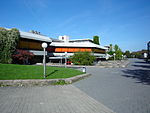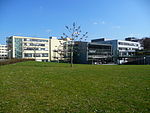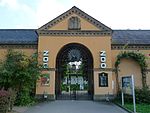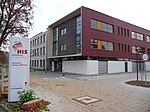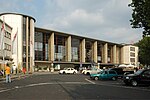South Asia Institute (Germany)
Area studies stubsEducational institutions established in 1962Germany university stubsHeidelberg UniversityIndology

The South Asia Institute (SAI) is an interdisciplinary center of the Ruprecht-Karls University Heidelberg, Germany for research and teaching on South Asia (that is, the research subjects are the countries Bangladesh, Bhutan, India, the Maldives, Nepal, Pakistan and Sri Lanka). It was founded in 1962 and is located on the campus in Neuenheimer Feld. Due to the close linguistic and historical ties with the South Asian subcontinent, adjacent cultural regions such as Afghanistan or Tibet are also included in the South Asia Institute.
Excerpt from the Wikipedia article South Asia Institute (Germany) (License: CC BY-SA 3.0, Authors, Images).South Asia Institute (Germany)
Im Neuenheimer Feld, Heidelberg Neuenheimer Feld (Neuenheim)
Geographical coordinates (GPS) Address External links Nearby Places Show on map
Geographical coordinates (GPS)
| Latitude | Longitude |
|---|---|
| N 49.418333333333 ° | E 8.6697222222222 ° |
Address
Universitätsrechenzentrum
Im Neuenheimer Feld 330
69120 Heidelberg, Neuenheimer Feld (Neuenheim)
Baden-Württemberg, Germany
Open on Google Maps

